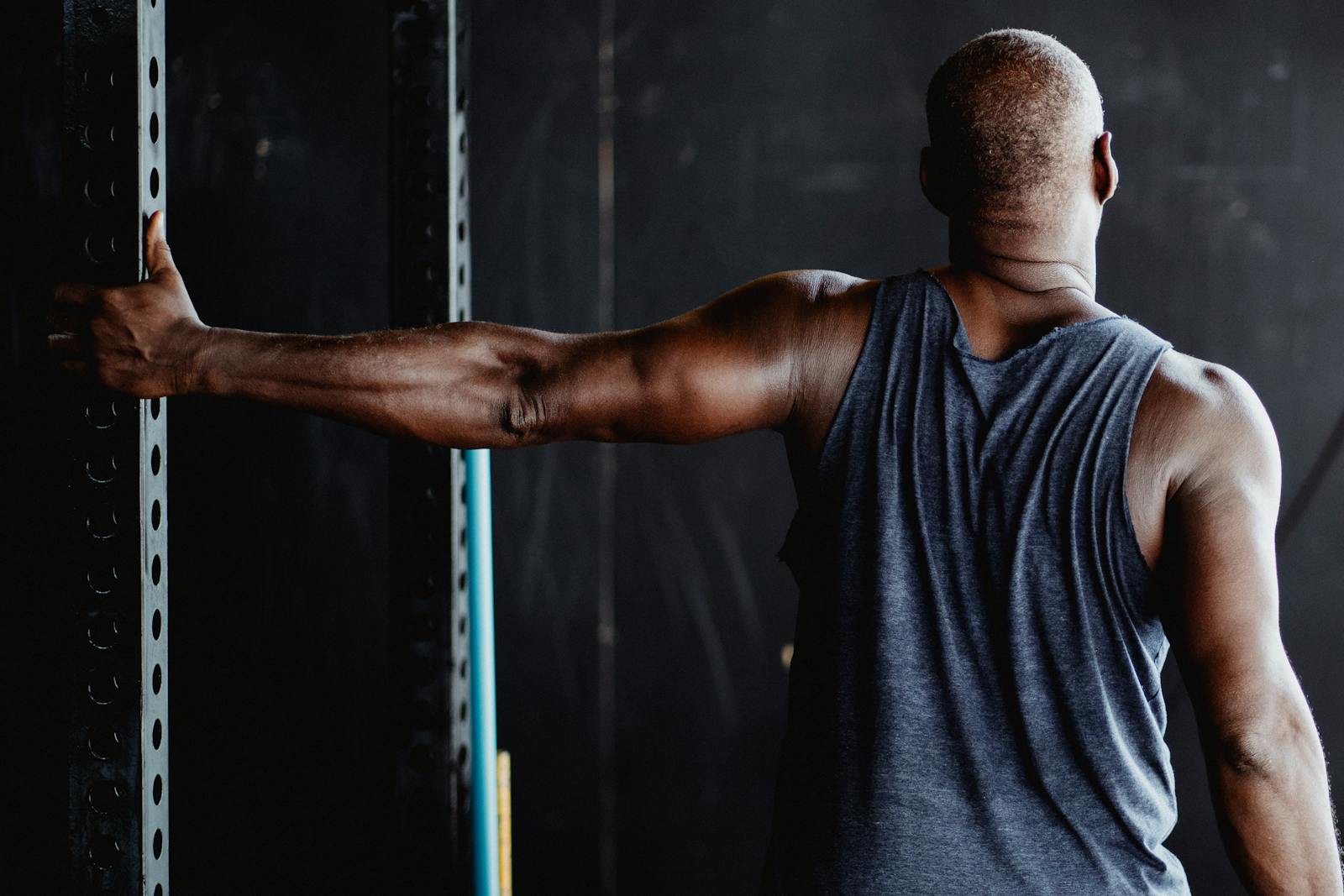In the domain of workers’ compensation, vocational rehabilitation serves as an essential bridge, assisting individuals in their journey from injury to reintegration in the workforce. By supplementing recovery with skill restoration, training, and thorough support, it aims to mitigate the impact of work disability and augment an individual’s earning competence. While the immediate benefits to the employee are evident, the broader implications for employers and the resilience of the workforce as a whole warrant further exploration and understanding.
Understanding Vocational Rehabilitation
Vocational Rehabilitation, a beacon of hope for many injured workers, is a service designed to help individuals regain their professional footing after a work-related accident or illness. It is pivotal in facilitating a smooth shift back into the workforce, allowing injured workers to maintain their independence and financial security.
Rehabilitation techniques form the backbone of this service, incorporating an array of strategies tailored to the individual’s unique needs and circumstances. These techniques focus not only on physical recovery but also on psychological and emotional support, empowering the individual to overcome the hurdles of disability confidently.
Disability management is another essential facet of vocational rehabilitation. This entails developing an understanding of the individual’s particular disability, its effects on their work capacity, and devising strategies to maximize their productivity despite the limitations. It is a proactive approach that emphasizes the need for effective communication, collaboration, and engagement between all parties involved.
In essence, vocational rehabilitation serves as a lifeline for injured workers, fostering hope, resilience, and determination in the face of adversity. It embodies a holistic approach towards disability management, underscoring the profound impact of thorough rehabilitation techniques in enabling individuals to reclaim their professional lives after a work-related accident or illness.
Workers’ Compensation: A Brief Overview
Workers’ Compensation, an essential element of employee safety, warrants a thorough discussion. A system designed to provide benefits to employees who suffer work-related injuries or illnesses, its key components require careful analysis. An empathetic understanding of these components is important in recognizing its role in vocational rehabilitation.
Understanding Workers’ Compensation
In the landscape of labor rights and protections, Workers’ Compensation serves as a crucial safety net, providing financial and medical support to employees who suffer injuries or illnesses related to their employment. Understanding Workers’ Compensation requires a grasp of compensation eligibility. Not all injuries are compensable; the injury or illness must be work-related. Injury prevention is hence a key aspect, with employers and employees alike being responsible for maintaining a safe working environment. However, when prevention fails, Workers’ Compensation steps in, cushioning the financial impact on the injured worker. The system is designed to protect workers, while also limiting employers’ liabilities, thereby striking a balance in the labor ecosystem. Knowing the ins and outs of this system is essential for both employees and employers.
Key Components of Compensation
Delving into the essential constituents of Workers’ Compensation, we find it typically encompasses medical expenses, rehabilitation costs, and wage replacement, each tailored to the worker’s unique circumstances and needs. The Compensation Calculation is an intricate process, factoring in variables such as the workers’ typical earnings, nature of the injury, and the estimated time for recovery. This precise computation guarantees fairness and adequacy in the compensation provided. However, this complexity can also lead to Compensation Disputes, with disagreements often arising over the extent of injury or the level of wage replacement. In these instances, negotiation, mediation, or even litigation may be necessary. These key elements underline the importance of Workers’ Compensation in providing essential support to injured workers, while also highlighting potential areas of contention.
Vocational Rehabilitation in Workers’ Compensation
Vocational rehabilitation in the context of workers’ compensation is a crucial element that warrants our attention. This process, which seeks to restore an injured worker’s skills and capabilities for reemployment, is interwoven with compensation benefits, creating a complex yet important system. Through this discussion, we will examine the intricacies of vocational rehabilitation and how it interfaces with compensation benefits, providing a thorough understanding that benefits both employers and employees.
Understanding Vocational Rehabilitation
Grasping the concept of vocational rehabilitation, particularly in the context of workers’ compensation, requires an in-depth exploration into its purpose, processes, and potential outcomes. This system employs various rehabilitation methodologies to facilitate an injured worker’s return to the workforce. It aims to restore or enhance their occupational performance, thereby reducing the duration and impact of work disability. The vocational training benefits are manifold, including skill acquisition, job readiness, and increased earning capacity. Vocational rehabilitation also fosters self-esteem and independence, which are critical to the overall well-being of the injured worker. It’s critical to understand that this process is not merely a cost-containment strategy, but a holistic approach that supports the worker’s recovery and reintegration into the workforce.
Rehabilitation and Compensation Benefits
The intersection of rehabilitation and compensation within workers’ compensation offers a well-rounded approach that not only aids in the physical and psychological recovery of the injured worker, but also assists in their financial stability during this challenging period. Underlying this approach are the principles set forth in Compensation Legislation, which mandate certain rights and benefits for injured workers. Rehabilitation Technologies, on the other hand, provide the tools and resources necessary for physical recuperation and reintegration into the workforce. These technologies, coupled with the financial support offered by compensation benefits, create a holistic system designed to help injured workers regain their health, independence, and financial security. This dual role of vocational rehabilitation in workers’ compensation underscores its critical importance in maintaining the welfare of injured workers.
The Rehabilitation Process: Key Steps
In understanding the rehabilitation process, it is essential to identify the key steps involved, which are designed to assist injured workers in regaining their capacities and returning to productive employment. The application of various rehabilitation techniques is pivotal in guaranteeing a smooth recovery timeline.
The initial step in the process is the assessment of the injured worker’s physical and psychological state. This evaluation forms the basis of a personalized rehabilitation plan tailored to the individual’s unique needs. This plan encompasses medical treatment, physical therapy, and potentially vocational training. The purpose is to restore, as closely as possible, the injured worker’s pre-injury health and occupational status.
The next phase involves implementing the plan and monitoring progress, adjusting as necessary. Rehabilitation professionals play a critical role here, guiding the worker through the recovery process and ensuring the techniques employed are effective. The final step is the reintegration of the worker into the workforce.
Throughout this process, empathy is paramount, acknowledging the physical and emotional hardship that a workplace injury can cause. An informed, analytical approach ensures the most effective rehabilitation techniques are employed, minimizing the recovery timeline and assuring a successful return to work.

Benefits for Injured Employees
Beyond the physical and psychological support offered during the rehabilitation process, injured employees also stand to gain numerous benefits from vocational rehabilitation in the context of workers’ compensation. The implementation of effective rehabilitation techniques plays an essential role in the recovery journey of these employees, directly influencing their ability to return to work.
Through personalized rehabilitation plans, the employees are equipped with new skills and strategies that promote resilience and adaptability. This fosters a sense of self-sufficiency and confidence, which can lead to improved job satisfaction and productivity upon their return to work.
Employee support is another key benefit of vocational rehabilitation. This includes not just medical and therapeutic assistance, but also guidance in maneuvering the complexities of workers’ compensation claims. This all-encompassing support system aids in reducing the stress and anxiety commonly associated with injury recovery.
Moreover, vocational rehabilitation allows for the exploration of alternative career paths for those who may no longer be able to perform their previous job duties. This contributes to the long-term financial stability of the injured employee, ensuring that they can continue to lead a fulfilling life after their recovery.
In essence, vocational rehabilitation offers injured employees a lifeline, transforming an unfortunate circumstance into an opportunity for personal and professional growth.
Advantages for Employers
While primarily geared towards helping injured employees, vocational rehabilitation also presents a myriad of advantages for employers, setting the stage for a more resilient and adaptive workforce. Through employer incentives, employers can financially benefit from assisting their employees in returning to work. These incentives often manifest as premium discounts or rebates on workers’ compensation insurance, which can notably reduce the employer’s financial burden.
From a cost analysis perspective, the investment in vocational rehabilitation can lead to substantial savings. By helping injured workers return to employment more quickly, employers can reduce the duration of workers’ compensation claims, thereby saving on claim costs. Additionally, by retaining experienced employees, companies avoid the high costs associated with hiring and training new staff.
Moreover, vocational rehabilitation can enhance an employer’s reputation, showcasing their commitment to employee welfare and wellbeing. It can foster a positive workplace culture, which can, in turn, improve employee morale, productivity, and loyalty.
Case Study: Successful Rehabilitation Stories
In shifting our focus to the real-world application of vocational rehabilitation, we turn our attention to successful stories that illuminate the journey of overcoming workplace injuries. These personal narratives will shed light on the process of rehabilitation, offering a firsthand look at the challenges and triumphs encountered along the way. Additionally, we will explore the post-rehabilitation career success, demonstrating the potential outcomes of these programs.
Overcoming Workplace Injuries
Drawing from real-life experiences, we explore several compelling examples of workers who have triumphed over workplace injuries through the aid of vocational rehabilitation. With a strategic focus on injury prevention and the utilization of advanced rehabilitation technology, these individuals have successfully navigated the recovery process. A factory worker, for instance, mastered new skills through rehabilitation technology, effectively moving into a less physically demanding role. Another case features a construction worker who, after a debilitating accident, was able to return to the workforce in a modified capacity through vocational rehabilitation. These stories underscore the transformative power of vocational rehabilitation in overcoming workplace injuries, demonstrating its effectiveness in fostering resilience, adaptability, and sustainable employment.
Rehabilitation Journey: Personal Narratives
To further elucidate the power of vocational rehabilitation, we shall now turn our attention to personal narratives that paint a vivid picture of the rehabilitation journey, showcasing how individuals overcame their injuries and reestablished their place in the workforce. These stories underscore the emotional impact of workplace injuries and the personal resilience required to surmount them. One narrative follows a carpenter who, after a debilitating accident, undertook vocational rehabilitation, retrained as a designer, and successfully reentered the workforce. His journey was marked by personal resilience and a positive attitude, demonstrating that vocational rehabilitation can provide a constructive pathway to recovery, with an emphasis on emotional well-being and the restoration of self-esteem.
Post-Rehabilitation Career Success
Delving into the domain of post-rehabilitation career success, we find numerous examples of individuals who, after completing vocational rehabilitation, not only regained their professional footing but also achieved significant career growth. The use of Rehabilitation Technology Innovations has played a significant role in these success stories, providing effective tools to overcome physical or cognitive limitations. These technological advances, coupled with tailored vocational rehabilitation programs, have made it possible for many individuals to return to work confidently and productively. Equally important is the Post Rehabilitation Psychological Impact; this often-overlooked aspect of rehabilitation can be a defining factor in a person’s career success. The increased self-esteem and resilience developed through successful rehabilitation can drive individuals to achieve greater professional heights post-rehabilitation.
Common Challenges in Rehabilitation
Managing the complexities of vocational rehabilitation often presents numerous challenges, ranging from physical hurdles to psychological barriers, each requiring a tailored approach for effective resolution. Rehabilitation technology, such as assistive devices and software, while instrumental in facilitating the rehabilitation process, can sometimes be difficult to adapt to, especially for older or less tech-savvy individuals. Inconsistent accessibility and compatibility issues with these technologies can also hinder seamless progress in rehabilitation.
Furthermore, integrating a holistic approach into rehabilitation can be challenging. This approach necessitates consideration of all aspects of a person’s life – physical, emotional, social, vocational, and even spiritual. However, understanding and effectively addressing all these facets can be demanding due to their interconnectedness and the individual’s unique circumstances.
Moreover, psychological barriers such as denial, fear, and depression can notably impact an individual’s commitment to their rehabilitation therapy. These emotional hurdles often prove to be just as, if not more, demanding than the physical ones.

Overcoming Rehabilitation Obstacles
Despite the myriad of challenges often encountered in vocational rehabilitation, particularly in the context of workers’ compensation, there are effective strategies and methods available to surmount these obstacles. One significant strategy is leveraging rehabilitation technology advancements. These advancements have streamlined the rehabilitation process, making it more efficient and personalized. For instance, virtual reality systems are now being used to simulate work environments, allowing workers to gradually reintegrate into their jobs while still in the comfort of a controlled therapeutic setting. This reduces the fear and anxiety often associated with returning to work post-injury.
Simultaneously, combating the stigma associated with disability is vital. Employers and coworkers need to be educated about the capabilities and potentials of workers with disabilities. Seminars, workshops, and inclusion training can foster a more understanding and accepting workplace environment. Additionally, promoting success stories of workers who have successfully reintegrated into the workforce post-rehabilitation can help dispel misconceptions and stereotypes.
Indeed, overcoming rehabilitation obstacles is a multi-faceted task. It requires not just technological innovation but also a shift in societal attitudes towards disability. Through these efforts, we can create a more inclusive and supportive environment for workers undergoing vocational rehabilitation.
Legal Aspects of Vocational Rehabilitation
Exploring the legal landscape of vocational rehabilitation, which is often intricate and multifaceted, is an essential component in supporting injured workers’ rights and ensuring their seamless shift back into the workforce. Rehabilitation Legislation forms the backbone of this landscape, setting out the rights and responsibilities of all parties involved.
In the context of workers’ compensation, legal support plays an important role in interpreting the complexities of legislation, helping workers navigate their way through the intricate web of laws, policies, and procedures. This support becomes critical when determining eligibility for vocational rehabilitation services, understanding the extent of covered services, and recognizing the responsibilities of the employer and the rehabilitation provider.
Legal support also facilitates the resolution of disputes that may arise during the rehabilitation process. By bridging the gap between the legal and practical aspects of vocational rehabilitation, it ensures a fair and just outcome for the injured worker.
However, it’s important to remember that while the legal framework is important, its successful implementation is dependent on the collaborative efforts of all stakeholders. Therefore, continuous education and awareness about vocational rehabilitation and its legal aspects are necessary to maximize the benefits for the injured workers.
Future Trends in Vocational Rehabilitation
While understanding the legalities of vocational rehabilitation is crucial in safeguarding the rights of injured workers, it’s equally important to keep an eye on the evolving trends in this field that promise to shape the future of vocational rehabilitation.
We are witnessing an era where rehabilitation technology advancements are drastically changing the landscape of vocational rehabilitation. These advancements are resulting in more effective and efficient rehabilitation processes, promising a brighter future for injured workers.
Global rehabilitation trends also suggest an increasing focus on holistic and personalized rehabilitation plans. There is a growing recognition that each individual’s rehabilitation journey is unique and requires a tailored approach.
The future trends in vocational rehabilitation can be summarized as follows:
- Increased use of cutting-edge rehabilitation technology
- Greater emphasis on personalized rehabilitation plans
- Growing recognition of the need for holistic approaches
- Expansion of virtual rehabilitation services
- Rising focus on early intervention and prevention strategies
With these trends, vocational rehabilitation is set to become more responsive, all-encompassing, and effective in helping injured workers return to work and lead fulfilling lives. The future of vocational rehabilitation, therefore, looks promising and vibrant.
Frequently Asked Questions
Can Vocational Rehabilitation Services Be Provided Online?
Yes, with the advent of technological advancements, vocational rehabilitation services can be provided online. This online accessibility allows individuals to receive necessary support and guidance, regardless of their geographical location or mobility challenges.
Does Vocational Rehabilitation Cover Mental Health Issues?
Yes, vocational rehabilitation does cover mental health issues. It employs therapeutic approaches and stigma reduction strategies to address these problems, promoting recovery and enhancing the individual’s quality of life and work performance.
What Qualifications Do Vocational Rehabilitation Counselors Need?
Vocational rehabilitation counselors require specific qualifications including a master’s degree in rehabilitation counseling or a related field and successful completion of a counselor licensing process, demonstrating their expertise and commitment to the profession.
How Does Vocational Rehabilitation Support Families of Injured Workers?
Vocational rehabilitation supports families of injured workers through family support strategies, aiding in emotional and financial stability. Enhancing rehabilitation outcomes, it provides resources and guidance for adapting to changes in employment status and capabilities.
Are There Different Vocational Rehabilitation Programs for Varying Industries?
Yes, vocational rehabilitation programs often vary according to industry. These programs are tailored to offer industry-specific training, which can differ greatly in scope and rehabilitation program costs across various sectors.

